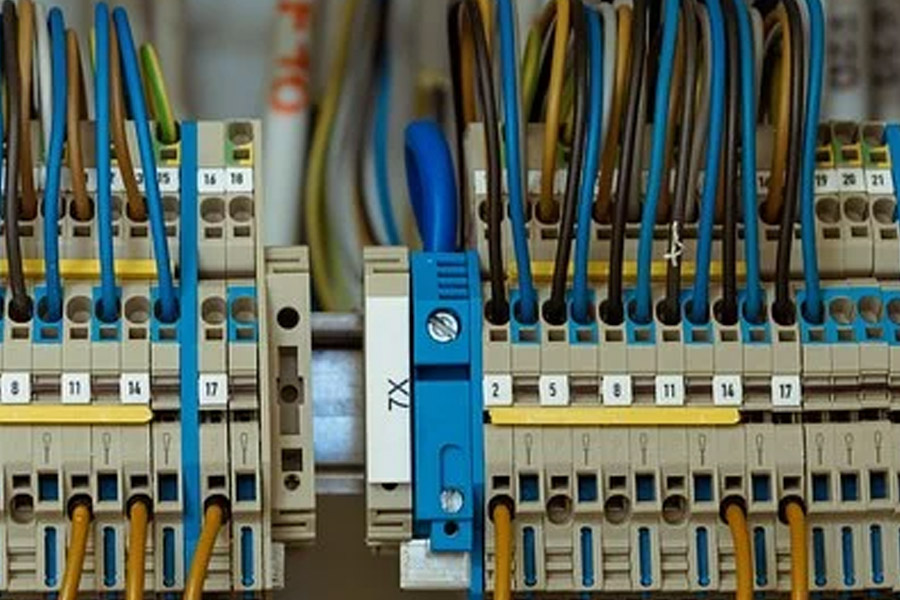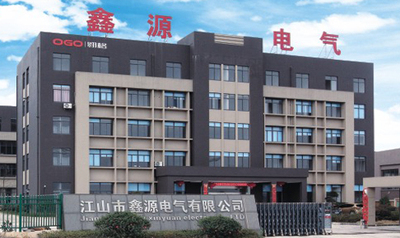Welcome to Jiangshan Xinyuan Electric Co., Ltd!
One. Several rated operation modes of transformers
1. Allowable range of transformer voltage change
For a power transformer, if the voltage is not higher than its rated voltage, then this will not have a great impact on the transformer itself, but will only reduce the output of the transformer;
In a transformer, if the voltage has exceeded its rated voltage, this will increase its reactive power loss and core loss. Therefore, this will have some bad effects on the insulation performance of the transformer.

It can be seen from the above that the deviation of the transformer voltage and the rated voltage will sometimes have a certain impact on it, so what is the allowable deviation range between the two? After countless people’s experience and research, the range is within 5%, which means that if the primary voltage of the power transformer is within 5% of the rated value, then its secondary side can carry the rated output. run.
2. Regarding the heating and cooling of the transformer
According to the working principle of the transformer, we know that the electrical energy loss between the winding and the iron core will all be converted into heat, which will cause the temperature of each position of the transformer to be increased, but not all parts of the temperature can be uniformly increased. It's uneven.
The whole heat dissipation process is that the heat will gradually pass through the windings and the iron core, and then be transferred to the transformer tank, and then the hot oil heat emitted from the tank will be diffused into the surrounding air through the transformer radiator.
The characteristic is that in the whole process, the temperature of each part of the transformer is not the same, but is very different. Among them, the critical temperature is the winding area. Because a transformer with a large capacity will cause its loss and heat to be greater, the cooling method we need to adopt is to force oil-water cooling, that is, to set oil circuits in the high and low windings of the transformer. This can greatly increase the heat dissipation rate.
The HTRS-V transformer capacity and no-load load tester is a dedicated instrument for measuring the capacity of distribution power transformers, and measuring transformer no-load and short-circuit losses. It also has a harmonic analysis function to facilitate the analysis of on-site power grid quality.
3. Transformer allowable temperature and temperature rise
The allowable temperature of the transformer is not set in stone, but depends on the insulating material of the transformer itself. For example, the insulating material used for oil change is oil and paper.
In the case that the highest temperature of the transformer winding is 98 degrees Celsius, the service life of the transformer will be between 20 and 30 years. However, in actual operation, the temperature of the highest point of the winding is generally not higher than 98 degrees, so the service life of the transformer is more than 30 years.
In summary, we can see that when the transformer is working, our maintenance method is to strengthen the detection and monitoring of the winding temperature and the top oil temperature. In response to this, we can install an over-temperature protection device in the transformer, so when the transformer is already higher than the low-temperature fixed value, an alarm will sound, and it will automatically trip when the temperature is higher than the high-temperature fixed value.
4. Transformer overload capacity
In the normal working state of the power transformer, the load rate of the daily load curve is usually not higher than one. We can derive from the principle of equivalent aging that if the life of the transformer with more loss when overloaded and the life with less loss when the transformer is under load can be complemented, the specified years can still be obtained.
The principle of the normal overload capacity of the transformer is not to damage the normal life, that is to say, in the whole time interval, as long as the insulation aging rate of the transformer is not higher than or equal to 1, and it can meet the following conditions:
1. When overloaded, the critical point temperature of the winding should be lower than 140 degrees, and the upper oil temperature should not be higher than 95 degrees;
Second, the peak overload of the power transformer during the whole process cannot be 50% higher than the rated load.
In the case of a system failure, we must first find a way to ensure that the power supply is uninterrupted, and then we must consider the problem of equipment insulation aging, because an accident will reduce the service life of the transformer. Under normal circumstances, the insulation aging rate is allowed to be much higher than the normal overload. Accident overload is to allow the transformer to carry more load in a relatively short time.
Two. Matters needing attention when the transformer is overloaded:
1. Power transformers that operate at full load all day long should not be overloaded.
2. Often in the case of low-load operation of the transformer, the allowable overload condition and duration of the transformer peak load are very strict.
3. Adjust the load operation according to the season, such as low load operation in summer, winter can be properly overloaded operation, and the overload cannot exceed 15%.
4. Generally, the overload of oil-immersed transformers is less than 30%; and the overload of forced oil-circulating air-cooled or water-cooled transformers is often less than 20%.
5. When the transformer is in overload operation, the cooler should be put into operation completely.
Three. Allowable value of transformer insulation resistance
We know that the insulation resistance of newly installed transformers, or those that have just been overhauled or out of service for a long time, must be measured before they are put into operation.
Let's first understand the relevant regulations on transformer insulation resistance:
One is more than 70% compared with the previous measurement result.
Second, the voltage must not be higher than 500 volts, and the insulation resistance must exceed 0.5 megohms; when the voltage exceeds 500 volts, each kV shall not be less than 1 megohm.
Third, the absorption ratio of the high and low voltage windings to ground should be above 1.3.
The fourth is dual winding measurement items: primary side to ground, secondary side to ground, and secondary side to secondary side insulation resistance.
Fourth. the inspection of the transformer
(1) About the inspection before power transmission
1. Open the gas release valve of the Buchholz relay, and then close the valve after releasing the gas inside.
2. Check the power input of the cooler and observe whether the cooler is operating normally.
3. Observe that the oil level in the oil tank of the transformer is normal enough.
4. Check whether the transformer is leaking oil.
5. Calculate the temperature of each part of the transformer.

The transformer ratio test is a must-do item, which can effectively supervise the quality of the transformer product during delivery and use, and prevent short circuit, open circuit, connection error, internal failure or contact failure of the transformer.
(2) About the inspection of power transformers in operation
1. Check whether the oil level and oil color of the oil pillow of the transformer are normal, and carefully check whether there is oil leakage.
2. Observe and ensure that the casing has no oil leakage, no damage, and no discharge.
3. Check whether the sound of the transformer is normal, and check the drying condition of the silica gel.
4 Pay attention to whether the transformer body has oil leakage.
5. Check that the transformer oil temperature and the thermostat are normal.
6. The oil system valve is opened and closed correctly, and the fan and oil pump are operating normally
7. There is no gas in the Buchholz relay, and the valve between the relay and the oil pillow is opened.
8. Whether the temperature indication of the dry-type transformer is correct and whether the cooling fan is working properly.
9. In the case of rain and snow, carefully check whether the transformer has discharge leakage.
10. Increase the number of inspections within 3 days of formal operation.
Fives. Gas protection and tap changer operation
(1) About the operation of gas protection devices
When the power transformer is working normally, the gas protection and the differential protection are the main protections for its internal faults, and the two cannot be withdrawn at the same time. Among them, the position where the heavy gas protection pressure plate throws the trip, and the position where the light gas protection throws the signal.
However, other special circumstances are not guaranteed, such as the heavy gas protection pressure plate needs to be changed to the signal position. It is easier to see that after the transformer has been overhauled, oil changed and oil filtered, within two to three days after it is put into operation again, we wait until there is no gas or air bubbles in the air, and then we put the heavy gas protection to the trip position.
(2) Operation and maintenance of tap changer
1. No-load voltage regulation: When we change the position of the tap, we can make a few turns in the forward and reverse directions, so that the oxide film and oil on the contacts can be eliminated, which is why we can pay attention to the correctness of the position. After we have changed the position of the tap, we need to measure whether the DC resistance is qualified.
2. On-load voltage regulation: The test cycle is three months, and it is necessary to check whether the electric operating mechanism is in good condition; when it has been changed 5000 times, it can be taken out for inspection.
Huatian Power HTZZ DC resistance tester is an indispensable test item after the transformer is handed over, overhauled, and tap changer changed. By measuring the DC resistance of the transformer windings, you can check the welding or connection quality of the leads, whether the windings are short-circuited or open, and whether the tap switch is in good contact.
Six. Operation of respirator and silica gel
The respirator allows the gas in the oil pillow to breathe through it to remove impurities and prevent the oil in the oil pillow from directly contacting the atmosphere and bringing moisture into the transformer. When the silica gel in the respirator becomes pink due to dampness, you need to replace the silica gel with a new one or dry the silica gel.
The role of the oil purifier is to eliminate water and impurities in the oil.

Seven. the operation of transformer oil
Oil has two functions, namely insulation and cooling. When the transformer is running under load, the oil temperature slowly rises, which accelerates its oxidation speed, and sometimes it will cause the insulation oil to deteriorate, so the insulation effect of the transformer oil will be weakened.
Usually, between 60 and 70 degrees, the oil aging process is very slow at this time, and the temperature of the transformer oil in normal operation is often within this range. When the oil temperature reaches 120 degrees, the oxidation rate of the oil will continue to increase. Therefore, we need to sample and test the oil regularly or as needed.
Related Information

CONTACT
TEL:0570-4010338 / 0570-4058008
ADD:No.2 Huiyuan Road, Shanhai cooperation zone, Jiangshan Economic Development Zone, Zhejiang Province
EMAIL:xydq@xinyuan-electrical.com
FAX:0570-4018638/0570-4911443
COPYRIGHT © Jiangshan Xinyuan Electric Co., Ltd 浙ICP备2020042416号-1 Powed By:300.cn








